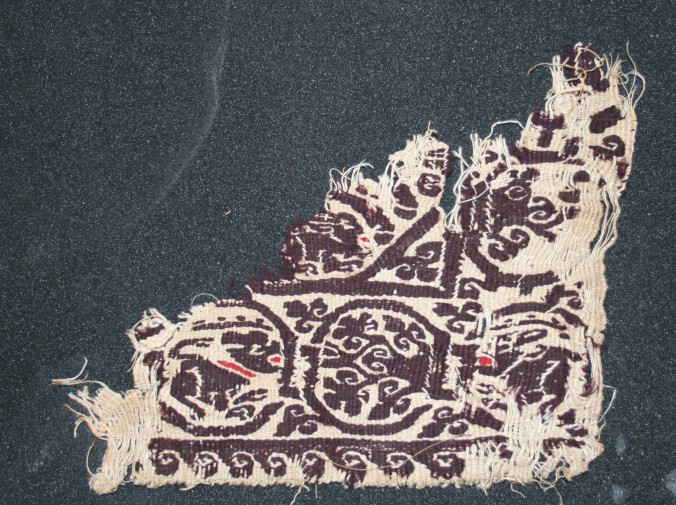W865
W865

Fragment of a square medallion of brown-purple wool on undyed linen. The design shows running animals and a plant. The tongues of the animals are picked out in red.
This looks similar to Byzantine pieces (AD 527-640) in Pritchard (2004, 60, 62, fig. 4.11). A similar item also appears in Lewis (1969, 34 pl. 73) and another in Caroll (1988, 116-118). Both the latter are dated to the 6th century AD.
Square shapes such as these were used to decorate linen tunics in the 1st millennium AD. The Early Roman Period saw use of monochrome decoration (brown/purple wool on a linen background). From around the 6th century AD other colours were increasingly used in the designs.
Tunics of the period were decorated with medallions placed in pairs. One motif would go over each shoulder and the other two over each knee. It has been suggested that these were so placed to protect the arm and knee joints from harm (Carroll 1988, 84).
Carroll, D.L. 1988. Looms and Textiles of the Copts: First Millennium Egyptian Textiles in the Carl Austin Rietz Collection of the California Academy of Sciences. San Francisco: California Academy of Sciences.
Lewis, S. 1969. Early Coptic Textiles. Stanford: Stanford University.
Pritchard, F. 2004. Clothing Culture. Dress in Egypt in the First Millennium AD. Clothing from Egypt in the Collection of The Whitworth Art Gallery, The University of Manchester. Manchester: University of Manchester.